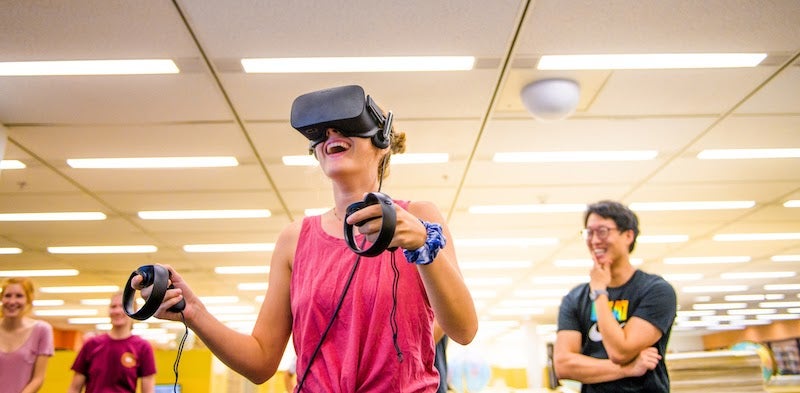Looking to the future with Lev Gonick, Part 1 - Experiential learning extends reality

Editor’s note: This five-part blog series is authored by ASU CIO Lev Gonick, who shares his top 10 predictions for higher education in 2021. New installments will be published every Wednesday during the month of February (and beyond).
By: Lev Gonick
How do large and complex organizations change? Do the systems within which these organizations are nested tend to revert to stasis no matter the shocks applied? If there was ever a year to test grand theories of change, we are living through such a period in the year ahead — 2021.
[caption align="right"]ASU CIO Lev Gonick
[/caption]
Perhaps change does not come in neat temporal packages like a quarter or a year. In the world of technology,our predisposition to new shiny objects has us biased in favor of disruptive forces that challenge the status quo.
This year, in addition to bold new technologies, we are contending with the global pandemic, which has brought unprecedented challenges to the fabric of our centuries-old institutions of governance and structures that guide layers of human, economic, and social interactions. Is this the beginning of something radically different for higher education?
Just over a decade ago, I offered a reflection on some of the major trends in higher education. Over the course of the next few weeks, I will be sharing ten trends — from new technologies, service delivery models and processes — that address some of the most important socio-technical developments facing university leadership, including technologists, in the year ahead.
Trend #1 — Putting the 'reality' in extended reality: Experiential learning
Over 50 years ago, J.S. Bruner wrote that the “active participation in the learning process by the child might result in the following hypothesized benefits: an increase in intellectual potency so as to make the acquired information more readily viable in problem solving, the enaction of the learning activities in terms of the intrinsic reward of discovery itself (as contrasted with the drive-reduction model of learning), learning the heuristics of discovery, and making material more readily accessible in memory.” (Bruner, J. S. [1961]. The act of discovery. Harvard Educational Review, 31, 21–32.)
For nearly half a century technologists have been promising that our computer processing, data visualizations and networks would be one day positioned to advance learning through experimentation and discovery. As the global, immersive, multiplayer online gaming world approaches $50 billion in economic value, the technology, networks and category type are no longer rate limiting.
Fusing academic content and its associated rigor, with compelling narrative, alongside immersive, avatar-based and other extended reality technologies is now coming into focus with venture-funded startups like Alchem.ie and GixXR.
The ASU example — Education through exploration
Dreamscape Learn, ASU’s partnership with Dreamscape Immersive, is a perfect example of the bright future of experiential learning. Inside Dreamscape Learn’s “pods,” learners can work in a virtual laboratory with fictional animals that function through real-world biology’s laws. Dreamscape Learn’s first immersive, avatar-driven experience at the “Alien Zoo” illustrates the value of XR technologies in higher education.
Check out ASU Thrive’s article “Exploring new worlds in virtual reality” to learn more about Dreamscape Learn’s immersive experience.
While this is still a market-creation and rather defining moment, the opportunity to design and enable education through exploration using deeply compelling immersive experiences is now real and approaching takeoff into a market category addressing Gen Z learners grounded in deep learning science.
Stay tuned for the next installment, "Envisioning the smart city of the future," coming February 10.